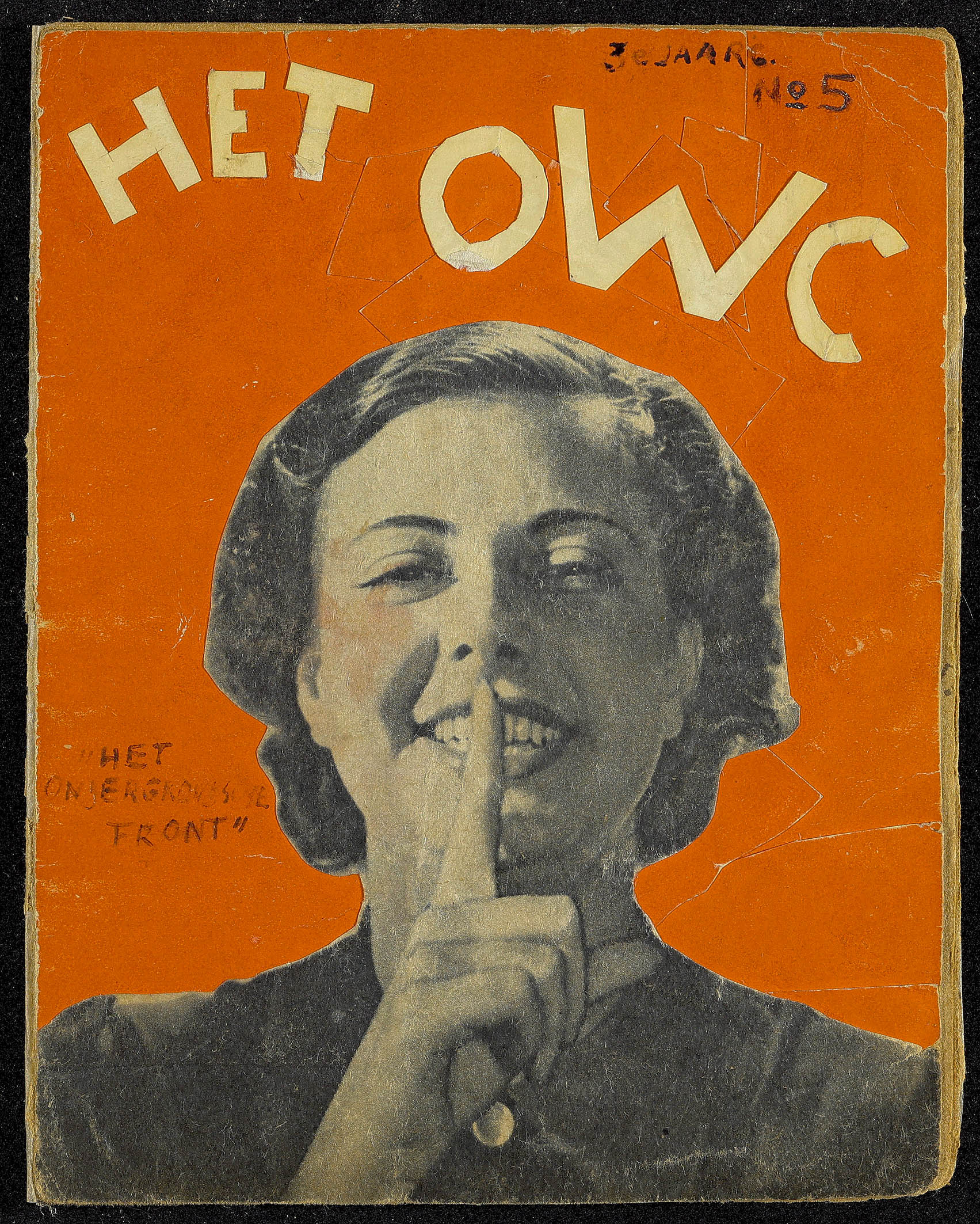
In the two years that Curt Bloch spent hiding from the Nazis in the attic of a house in the Netherlands, he launched a weekly satirical magazine filled with photomontages and poems about his own experiences, as well as wider political developments in the outside world. All 95 issues of Het Onderwater Cabaret (The Underwater Cabaret) will be the subject of a free exhibition at the Jewish Museum Berlin from February 9 through May 26, 2024.
The Dutch term onderwater translates to underwater, but is also often used to mean that someone has gone into hiding. The handmade publication took aim at the Nazis, in particular Joseph Goebbels. In one poem about the notorious propagandist, he advised: “If he writes straight, read it crooked. If he writes crooked, read it straight.”
Curt Bloch. Photo: Jewish Museum Berlin, gift of Lide Schattenkerk.
“The overwhelming majority of writings that were created in hiding were destroyed,” the exhibition’s curator Aubrey Pomerance told the New York Times. “If they weren’t, they’ve come to the public attention before now. So, it’s tremendously exciting.”
Born in the western German city of Dortmund in 1908, Bloch’s was working as a legal clerk before his life changed forever at the age of 24. A sharp rise in antisemitism after Hitler came to power in 1933 forced Bloch to flee across the northern border into the Netherlands. In 1940, the Nazis invaded and Bloch moved to the small city of Enschede near the German border.
Curt Bloch, Het Onderwater Cabaret, Magazine cover from 16.09.1945. Het Onderwater Cabaret 30 Aug 1943; Jewish Museum Berlin, Convolute/816, Curt Bloch collection, loaned by the Charities Aid Foundation America thanks to the generous support of Curt Blochʼs family.
Bloch would escape deportation thanks to the heroic efforts of Leendert Overduin, a pastor for the Dutch Reformed Church who set up Group Overduin to help at least 1,000 Jewish people hide from the Nazis. In April 1943, the organization installed Bloch in the home of a couple, Bertus and Aleida Menneken, and he shared their tiny attic with another German-Jewish couple, Bruno Löwenberg and Karola Wolf. Group Overduin would continue to protect Bloch and his companions, supplying them with food and, unusually, the printed materials, glue, pens, and paper necessary to run his publication.
Curt Bloch, Het Onderwater Cabaret, Magazine cover from 30.08.1945. Het Onderwater Cabaret 30 Aug 1943; Jewish Museum Berlin, Convolute/816, Curt Bloch collection, loaned by the Charities Aid Foundation America thanks to the generous support of Curt Blochʼs family.
Though Bloch made one copy of each issue of Het Onderwater Cabaret, these were small enough to slip into a pocket and were passed around, possibly to other members of Group Overduin. Luckily, all 95 booklets were eventually returned and Bloch was able to take them home after the liberation in 1945. He soon met fellow Holocaust survivor Ruth Kan, and the couple emigrated to New York where they set up a business selling European antiques.
Curt Bloch, Het Onderwater Cabaret, Magazine cover from 18.12.1945. Het Onderwater Cabaret 30 Aug 1943; Jewish Museum Berlin, Convolute/816, Curt Bloch collection, loaned by the Charities Aid Foundation America thanks to the generous support of Curt Blochʼs family.
Meanwhile, the magazines remained family heirlooms collecting dust on a shelf until Bloch’s granddaughter Lucy decided to make them the subject of her own research. Her efforts to promote the magazine would lead to the forthcoming exhibition, “‘My Verses Are Like Dynamite’: Curt Bloch’s Het Onderwater Cabaret,” in Berlin and an accompanying book The Underwater Cabaret: The Satirical Resistance of Curt Bloch by Gerard Groeneveld. German, Dutch and English versions of Bloch’s poems will also be made available online on a dedicated website launched by Bloch’s daughter Simone Bloch.
More Trending Stories:
Art Dealers Christina and Emmanuel Di Donna on Their Special Holiday Rituals
Stefanie Heinze Paints Richly Ambiguous Worlds. Collectors Are Obsessed
Inspector Schachter Uncovers Allegations Regarding the Latest Art World Scandal—And It’s a Doozy
Archaeologists Call Foul on the Purported Discovery of a 27,000-Year-Old Pyramid
The Sprawling Legal Dispute Between Yves Bouvier and Dmitry Rybolovlev Is Finally Over